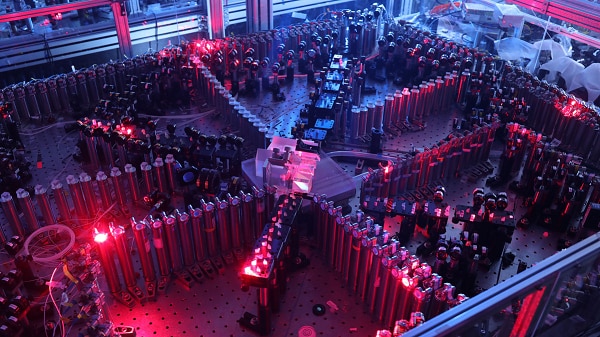
(Image Credit: geralt/pixabay)
AI is playing a key role in quantum physics. Researchers at Nanjing University and the Max Planck Institute used PyTheus, an AI tool, to replicate a technique that reproduces entanglement. The existing method forms two individual entangled pairs, performs a Bell-state measurement, and collapses the quantum system, producing two entanglement photons. Rather than recreating that process, PyTheus created a less complex method. This discovery could pave the way toward a more efficient quantum teleportation and quantum internet.
“As a first task, we aimed to rediscover entanglement swapping, one of the most crucial protocols in quantum networks. Curiously, the algorithm kept producing something else—something simpler—which we initially thought was incorrect. While investigating, we realized that PyTheus’s solution can entangle two distant particles without starting with entanglement, without Bell state projections, and even without measuring all ancillary photons,” Mario Krenn posted on X.
PyTheus is designed to produce and optimize quantum-optic experiments. Its process involves producing uncertainty about the photons’ origins. Essentially, it relies on different resources instead of quantum swapping to achieve entanglement. Making each photon generation path similar allowed the team to reproduce entanglement without complex measurements or pre-entangled pairs. Additionally, the process resulted in two entangled photons. The team believes this new-found, simpler technique is more practical than other methods.
The AI tool uses a graph to represent quantum optics experiments. Each graph shows the photons’ movement and interactivity. The vertices are photon paths seen by detectors, while the edges are paired photons from sources such as spontaneous parametric down-conversion (SPDC). Each color represents the photon’s internal mode, like polarization, and the line thickness shows the photon pair’s strength.
All the quantum optics experiments are automated by PyTheus. It designs quantum measurements, communication protocols, and gates. The AI tool also discovers new approaches toward using quantum systems, including single-photon sources, mixed states, and photon-entangled states based on their number.
The researchers were skeptical of the results. So, they ran repeated tests and discovered that the AI’s technique was very consistent, verifying its validity.
“The algorithm exploited a superposition of the origins of photon multiplets to achieve the same goal [as the much longer ‘quantum swapping’ process], using entirely different resources. For me, this changed my perspective on what is necessary to create entanglement—not because I now know what is necessary, but because we’ve realized what is not,” Kremm posted on X.

China’s photon-based quantum computer performed a calculation that would take a supercomputer 2.5 billion years to complete. (Image Credit: Xinhua)
In December 2020, researchers at the University of Science and Technology of China unveiled Jiuzhang, the world’s first photon quantum computer. It uses 76 photons as qubits to run calculations rather than superconducting materials. Jiuzhang performs the Gaussian boson sampling calculation in 200 seconds, which can take traditional supercomputers 2.5 billion years to complete. Besides the sensory equipment, which is kept at -269.1 C, most of these components function at room temperature. Doing so leads to a simpler development process than superconducting quantum computers that need to be in extremely cold temperatures, allowing the materials to conduct electricity without resistance.
While the calculations the quantum computer performed are impressive, the machine also has potential applications in quantum chemistry, machine learning, and graph theory. The photonic quantum computer is a “highly specialized and unorthodox machine, characterized as an elaborate, interconnected tabletop setup of lasers, mirrors, and detectors.”
Have a story tip? Message me at: http://twitter.com/Cabe_Atwell
